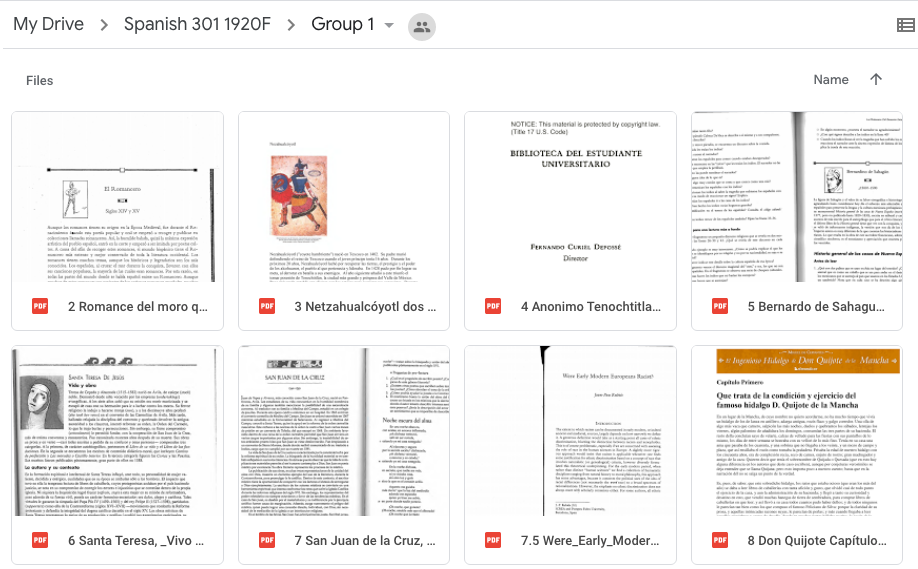PEDAGOGICAL OBJECTIVE
Collaborative annotation of digital texts helps students develop critical/close reading skills, strengthening their connections with both the texts and their fellow students. For larger classes this also provides a mechanism for ensuring that all students are fully prepared for class.
Academic technology tool
Google Drive and its commenting and annotation features.
Featured Faculty:
Image

Paul Schroeder Rodriguez

SPANISH, LATINX AND LATIN AMER STUDIES, FILM AND MEDIA STUDIES
Professor Schroeder Rodriguez presented about this project at the November 2019 ATS Event “Critical Analysis in Collaborative Settings with Google Apps”
Description
In the Fall 2019 course Literature and Culture of the Hispanic World, Professor Schroeder Rodriguez had a challenge: how to encourage close reading and discussion of course texts in a large class? Implementing a digital annotation practice, and having the students work in groups, proved to be the answer.
Course texts were digitized and placed in a shared Google folder, with duplicate folders provided to each group. Before each class meeting, students added comments and questions to the readings. Professor Schroeder Rodriguez and his teaching assistant were able to monitor common themes and areas of confusion. Students generally came to class very well-prepared and ready for discussions, since the online activity allowed them to forge a connection with the text, and with their classmates.

In the example below, we see evidence in the students’ comments of higher order thinking as well as peer learning. One student makes a connection between the main character’s physical suffering and mental state. Another brings attention to the author’s use of seasons to represent the character’s physical state. When one student asks why the author chose to have the book One Thousand and One Nights influence the character and plot, another student makes a connection between the themes of that book and the values of the main character.

Looking toward the future, having course texts (most of which are public-domain) in digital form opens up a realm of possibility. The text can be provided to the students with a short framing essay and discussion prompts written by the department. Several students in this semester’s class developed excellent questions for specific texts, which could easily be used as prompts for future semesters.
Campus Partners
Professor Schroeder-Rodriguez designed this course with curricular and course design support from the Center for Teaching and Learning and the Research and Instruction Librarians through the Re-Imagining the Commons Andrew W. Mellon Grant. Additionally, the CTL conducted a mid-semester review Fall 2019 which provided Professor Schroeder-Rodriguez additional insight into the student experience of this activity. Drawing on this student feedback to improve the course, Professor Shroeder-Rodriguez, provided additional scaffolding and discussion prompts.
Accessibility Bonus
- Providing course texts in accessible, digital form provides universal accessibility for all. Students with print or visual disabilities would not even need accomodations in this case.
- Professor Schroeder Rodriguez did not observe any negative impact of making the readings available online, and students were still welcome and encouraged to obtain paper course-packs.
How to...
Published Spring 2020 by Academic Technology Services